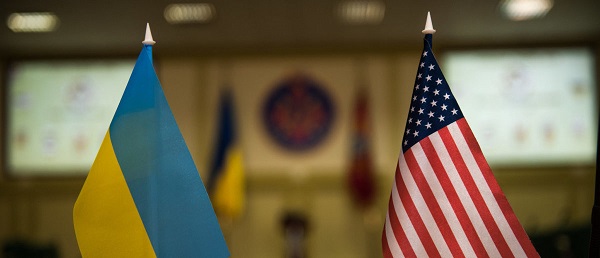Also Interesting
A beginners guide to the Stanley Cup Playoffs

The Stanley Cup Playoffs are in full swing. After a couple of weeks of intence competition the round of 16 has turned into the round of 8. Now teams from across Canada and the US are competing to be among the last four teams standing in the hunt for the vaunted for thef weeks of much revered Stanley Cup. Here is all you need to know.
The Stanley Cup Playoffs
After an 82 game schedule, half of the teams in the NHL are finished for the year. The top 8 teams in each division go on to the playoffs and win the right to compete for one of the most famous trophies in the world of sport. Of course we are speaking of the Stanley Cup. For newly interested people, the NHL playoffs are a novelty.
This may be the only sport where the regular season and the playoffs are almost like two entirely separate worlds. Teams play the entire season for the right to get to the playoffs and once there, to win home ice advantage. Although the teams that dominated the regular season win the advantage, it’s not uncommon for the teams who barely made it to the playoffs to knock them off in the first round. There truly is another mode of play that must be learned by players and teams who’ve not been there before. The NHL playoffs are such a physical grind, that all too often, the teams expending too much energy in the regular season can’t carry their momentum through to the Stanley Cup.
By the way, here you can check out the best casino bonus canada 2022, which also revolves around the upcoming Stanley Cup.
What are the “Stanly Cup Playoffs”?
The term playoff (also play-off) refers to an elimination match in various sports, such as hockey. As a rule, this determines a championship. The playoff games follow the regular season and are played according to the knockout system – the losing team is eliminated. Tony Sloterman, founder of Casino Bonuses Finder, for example, is a massive fan of the playoffs. After all, they show in advance which teams have what it takes to be potential winners of the Stanley Cup, he says.
Ice hockey playoffs in the National Hockey League (NHL)
The knockout system after the main round has been taking place in the NHL for over a century! In 1917, the year the National Hockey League was founded, there were two finals; a year later, the world’s oldest professional hockey league began to play the “best of seven” series.
Today, the NHL playoffs are still played in “best of seven” mode. The teams’ matchups are based on the final standings of the regular season. A key difference from some other professional playoff formats is that in the NHL playoffs, teams are paired initially played by conference. To explain: NHL teams are divided into the Eastern Conference or Western Conference, depending on their regional origins. These in turn split into two divisions. Therefore it’s not the top overall team playing the 16th team, but the top team in the conference facing off against the 8th place team in that conference. Still, that never guarantees victory!
Participation in the NHL playoffs
The participation in the NHL playoffs goes as follows:
● The three teams with the best points per division (2 divisions per conference) and
● The other two best teams in the conference which have not already qualified by virtue of their position in the division (wildcards).
So per conference, the above teams qualify for the playoff series. This is played within each conference with quarterfinals, semifinals and finals. The two winners of the conference playoffs compete against each other in the Stanley Cup Final.
The Stanley Cup is the traditional trophy that the playoff winners receive.
Hotly coveted: The Stanley Cup
The Stanley Cup is considered the most important ice hockey trophy in the world, awarded annually to the winner of the NHL playoffs. Colloquially, the cup is also called The Cup, The Holy Grail or Lord Stanley’s Mug.
A special feature is that the winners are immortalized on the Cup: the names of all players are engraved on it. In this way, the formerly quite handy cup has grown more and more in length over time.
Conclusion
The Stanley Cup and the trophy associated with it is the biggest event held in ice hockey worldwide. The most diverse and talented teams compete against each other from April onwards to virtually kick each other out in the conference. The advantage for fans is that there are many games to watch. We are very excited to see which team will qualify for the playoffs and win the Stanley Cup in the end.
Also Interesting
The bizarre story of Taro Tsujimoto

The National Hockey League (NHL) has seen its fair share of strange moments, but few compare to the bizarre and hilarious tale of Taro Tsujimoto, a player who never existed. His “selection” in the 1974 NHL Draft remains one of the most legendary pranks in hockey history. If you want to wager on actual players, making the 1xBet app download is definitely a great idea.
In the 1970s, the NHL Draft was a much less glamorous event than today. It was a tedious process conducted over the phone, with teams calling in their picks. The 3 biggest highlights of what happened during that year’s draft were:
- the draft dragged on for hours;
- there were multiple rounds and teams selecting unknown prospects from obscure leagues;
- frustrated with the monotony, Buffalo Sabres general manager Punch Imlach decided to have a little fun.
As the 11th round approached, Imlach instructed his team’s representative to draft Taro Tsujimoto, a supposed forward from the Tokyo Katanas of the Japan Ice Hockey League. The name sounded authentic enough. The league officials, unfamiliar with Japanese hockey, accepted the pick without question. By downloading the 1xBet app you will also be able to wager on great NHL teams too.
A small problem
There was a small problem with all of this, as 2 things didn’t exist: Tsujimoto and the Tokyo Katanas. Imlach had completely fabricated the player as a joke, taking advantage of the NHL’s lack of verification. When it comes to NHL wagers, there is no better platform than the 1xBet Canada site.
For weeks, the league listed Tsujimoto as an official draft pick, and even some newspapers reported on Buffalo’s mysterious new Japanese prospect. Eventually, the Sabres admitted the hoax, and the NHL was forced to retroactively erase the selection from its records.
Despite being a fictional player, Taro Tsujimoto took on a life of his own. Buffalo Sabres fans embraced the prank, and over the years, his name has become a cult legend in hockey culture. Some fans even wore jerseys with “Tsujimoto” on the back. The joke persisted so much that when EA Sports released NHL video games, players could occasionally find Tsujimoto in the game’s draft pool as a hidden Easter egg.
More than just a prank, the story of Taro Tsujimoto highlights 2 things: the quirks of old-school sports management and the creativity of one of hockey’s most colorful executives. Today, with the draft process being highly scrutinized and broadcast live, such a prank would be impossible. But Tsujimoto’s legacy lives on as one of hockey’s greatest inside jokes. What is not a joke are the great rewards that a platform like the Canadian 1xBet site can give you.
Also Interesting
60% of Canadians gamble each month – why the industry is going from strength to strength

When it comes to regulating gambling, Canada has a somewhat relaxed approach. The Canadian Gaming Association oversees the industry, but it’s up to individual provinces to enact and enforce any laws relating to online casino gaming, sports betting, traditional casino gaming, and other forms of gambling.
Canada’s online casino gaming laws are not totally clear, but individual provinces are starting to put this right. Ontario was the first and did so when it launched its own regulated igaming market in April 2022. Now some other provinces have followed suit, creating a safer igaming environment for players in those provinces. Below is a look at gambling in Canada compared to other parts of the world, at gaming laws in Alberta compared to other provinces, and at the future of the Canadian, US, and UK gambling industries.
Canada: a forever love of gambling
Gambling in some form or other has always been popular in Canada. Way back in the 1990s, research found six in ten Canadians (60%) gambled every month. Additionally, four in ten (43%) spent between 1 and 20 Canadian dollars on gambling. Fast forward to today and the Canadian gambling market is worth 14.2 billion US dollars as of January 2024, according to data on the website of consumer and market data company Statista.
It seems Canada enjoys wagering just as much as two other countries that love a gamble: the US and the UK. Data on the Statista website shows that 49% of US adults took part in gambling activities in 2023. Fifty-six percent said their attitude towards gambling had relaxed, compared to the 50% of 2019.
The UK returned similar stats for the same year. Forty-eight percent of adults reported engaging in gambling activity. Online casinos generated the most gross gambling yield in 2023, but it was the nation’s National Lottery that people played the most.

Alberta: following Ontario’s lead
The regulatory developments in Ontario have triggered movement in Alberta. In May 2024, Bill 16, the Red Tape Reduction Amendment Act, made it through the process and later received Royal Assent to become law. The act removes the monopoly of gaming by a single government entity and will allow private operators, licensed by Alberta’s provincial regulator, to provide online gaming services in Alberta, meaning players will have a choice of more than one Alberta online casino to play at.
The regulation transforms Alberta into one of the more liberal provinces when it comes to online gambling, others being Quebec, Ontario, and British Columbia.
Several provinces, such as Novia Scotia and Northwest Territories, have no provincially regulated online gaming sites. Some also restrict betting on horse racing and/or other types of sports betting, obliging citizens to use international betting sites for freedom from caps and betting on as many events as they wish.

What lies ahead for the Canadian, US, and UK gambling industries?
Canada’s appetite for gambling is clear, and the industry’s online sector is beginning to thrive. Ontario has enjoyed vast success by creating its own regulated market, one which, in just its first year, saw Canadians place billions in wagers and the industry itself generate more than a billion in total gaming revenue.
Canada can expect to see other provinces follow Ontario’s lead and allow private operators to provide services in the province under license. The purpose of the regulation is player protection. Any province that develops a regulated market will focus on this, so there will also be regulations around the advertising of gambling services.
The US
Gambling online is the future for the US, too, although states are slow to legalize it. As of September 2024, 38 states had legalized sports betting, following the US Supreme Court’s ruling that states could regulate sports gambling directly.
Despite allowing sports betting, some states only permit in-person betting, and only a few states allow online casino gaming. Operators believe online casino gaming is the future of gambling.
The UK
In the UK, the use of artificial intelligence (AI) will get bigger and bigger. Companies have realized AI can enhance players’ experience and are embracing it more and more. For instance, sports betting websites can use it to crunch data and provide iGamers with stats and other data to make better betting decisions. They’re also understanding they can use AI to prioritize content players are likely to be interested in and to personalize their offerings and services to players’ preferences.
Canada enjoys gambling as much as America and the UK. Although laws around igaming are more of a grey area in Canada, some provinces are clearing the issue up by creating regulated markets and experiencing great success. As time goes by, more are sure to follow.
-

 2025 Federal Election2 days ago
2025 Federal Election2 days agoMark Carney refuses to clarify 2022 remarks accusing the Freedom Convoy of ‘sedition’
-

 2025 Federal Election2 days ago
2025 Federal Election2 days agoPoilievre To Create ‘Canada First’ National Energy Corridor
-

 Bruce Dowbiggin2 days ago
Bruce Dowbiggin2 days agoAre the Jays Signing Or Declining? Only Vladdy & Bo Know For Sure
-

 2025 Federal Election2 days ago
2025 Federal Election2 days agoFixing Canada’s immigration system should be next government’s top priority
-

 Catherine Herridge16 hours ago
Catherine Herridge16 hours agoFBI imposed Hunter Biden laptop ‘gag order’ after employee accidentally confirmed authenticity: report
-

 International19 hours ago
International19 hours agoTrump’s ‘Golden Dome’ defense shield must be built now, Lt. Gen. warns
-

 2025 Federal Election17 hours ago
2025 Federal Election17 hours agoDon’t let the Liberals fool you on electric cars
-

 Daily Caller2 days ago
Daily Caller2 days agoBiden Administration Was Secretly More Involved In Ukraine Than It Let On, Investigation Reveals

